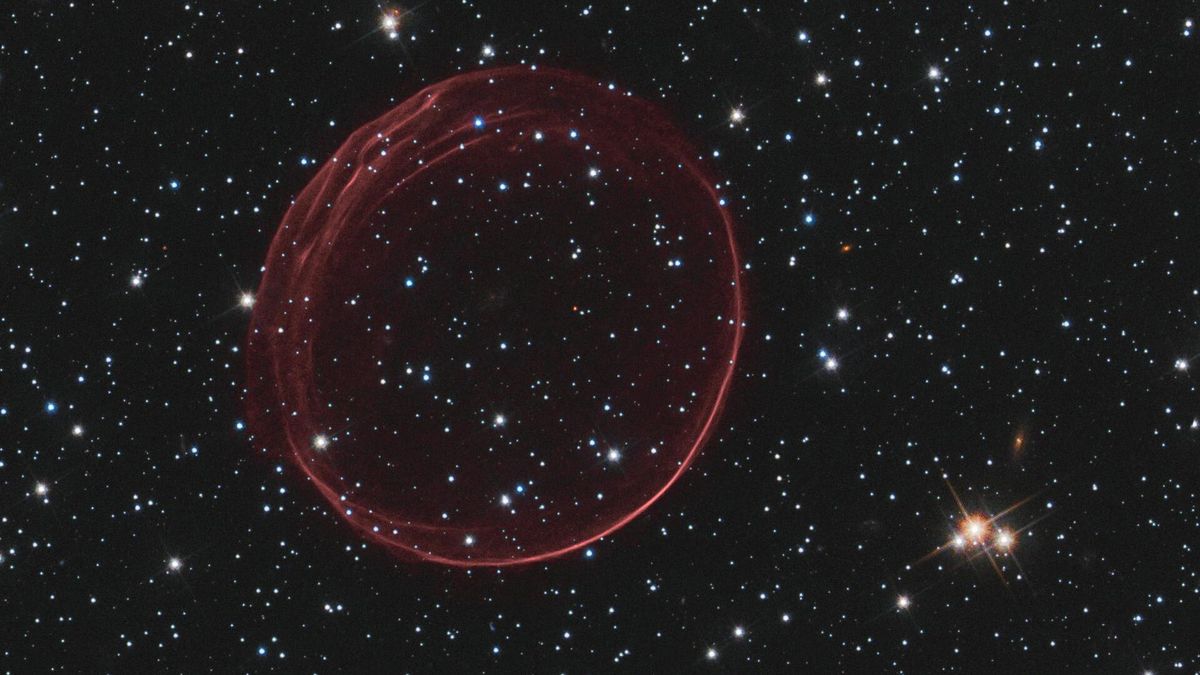Could the universe be dominated by particles moving faster than? The speed of light? This model of the universe agrees surprisingly well with observations, as a pair of physicists have discovered.
In a new paper that has not yet been peer-reviewed, physicists propose that our universe is dominated by tachyons, a hypothetical type of particle that always moves faster than light. Tachyons almost certainly do not exist; Moving faster than light violates everything we know about… The causal flow of time From the past to the future. But virtual particles are still interesting to physicists because of the small possibility that even our most established concepts, such as causation, might be wrong.
Researchers suggest that tachyons may be the true identity of Dark matterDark matter, the mysterious form of matter that makes up most of the mass of almost every galaxy in the universe, outweighs ordinary matter 5 to 1. Astronomers and physicists alike don't currently know what dark matter is made of, so they're free to cook it up. All kinds of ideas — because in the end, sometimes the farthest idea is right, and even if it's wrong, it can help us on the path to better understanding.
The researchers calculate that an expanding universe filled with tachyons could initially slow in its expansion before accelerating again. Our universe is currently undergoing an acceleration phase, driven by a phenomenon known as… Dark energySo this cosmological tachyon model can explain both dark energy and dark matter at the same time.
Related: A new study suggests that there may be a “dark mirror” universe within our universe where atoms failed to form
To test this idea, physicists applied their model to observations of Type Ia supernovae, a type of stellar explosion that allows cosmologists to build a relationship between distance and the expansion rate of the universe. Through Type Ia supernovae, astronomers first discovered in the late 1990s that the expansion rate of the universe was accelerating.
Physicists found that the tachyon cosmological model was as good at explaining supernova data as the standard cosmological model that includes dark matter and dark energy. This in itself is a surprise, given how unconventional this idea is.
However, this is only the beginning. We now have access to a wealth of data about the large-scale universe, such as the cosmic microwave background (the residual radiation released just after the Big Bang) and the arrangement of galaxies on the largest scales. The next step is to further test this idea against these additional observations.
The cosmological tachyon model is unlikely to pass such stringent experimental tests, given the unpredictable nature of tachyons. But continuing to push new directions, even unconventional ones, is important in this regard Cosmology; We never know when we might have a breakthrough. Scientists have been trying to understand dark matter for 50 years and dark energy for a quarter of a century, without arriving at any conclusive results. Solutions to these puzzles are likely to come from unexpected directions.
the Team research It was published in the arXiv preprint database in March.

“Extreme travel lover. Bacon fanatic. Troublemaker. Introvert. Passionate music fanatic.”







More Stories
A fossilized creature may explain a puzzling drawing on a rock wall.
MrBeast Sued Over ‘Unsafe Environment’ on Upcoming Amazon Reality Show | US TV
Watch comets Lemmon and SWAN approach Earth today